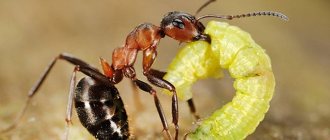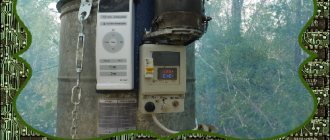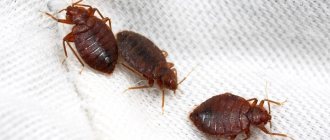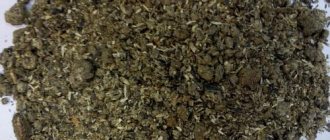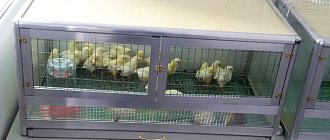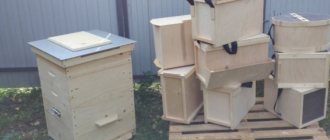How long do spiders live on average?
If the spider
lucky to live in a field, far from people, then its biological life can range from 3 months to 5 years.
Again, unless it gets eaten by a bird. Spiders live
the longest in zoos and home terrariums. Here their life can reach 20 years of age.
Interesting materials:
What do you need to send by cash on delivery? What do you need to open a medical card? What does it take to open a security agency in Kazakhstan? What do you need to open your own brewery? What do you need to send a paper letter? What do you need to send via SDEK? What do you need to transport a dog to Germany? What do you need to apply for alimony at the cost of living? What do you need to change IQOS under warranty? What do you need to change your policy to a plastic one?
What do they eat in winter?
Most spiders cannot eat their food right away. The venomous bite is necessary to paralyze the victim and turn its insides into a nutritional cocktail. The peculiarity of spider physiology does not require maintaining a constant temperature. For this reason, they can go without food for a long time and fall asleep, falling into torpor. During the winter months, the food supply is maintained by water and house spiders.
What do house spiders eat in an apartment in winter? Flies and mosquitoes stop penetrating into human housing with the onset of cold weather, going into hibernation. But apartments can be inhabited by cockroaches, moths, and fruit flies. Predators eat each other, thus redistributing habitat areas. The life cycle of house spiders is short: from 2 to 6 months. Reproduction depends on the food supply: if it is insufficient, new offspring appear after the end of the life cycle of the parents.
Preparations for the winter
House spiders, which do not hibernate in winter, surprise with their activity. What can spiders eat in an apartment in winter? If you look closely at the nets they spread, you can see the remains of insects wrapped in webs. The predator prudently creates “storerooms” in cool, damp places, where they can be stored longer without drying out. If there is a “raw material base”, spider stocks are renewed throughout the cold period. The spider withstands long breaks in feeding, supporting itself with water and ceasing active movements.
Folk remedies
If you don’t want to poison insects with aggressive chemicals, you can use folk remedies at home:
- Orange, hazelnut or chestnut. One of the products is crushed and placed in arthropod habitats. The pungent smell forces them to leave the room.
- Peppermint, tea tree or eucalyptus oil. Add a few drops of any of the oils to the spray bottle. Spray the prepared solution into the corners and baseboards. An intense aroma is formed that repels arthropods.
- Vinegar. Pour small quantities into plastic containers. They put it in the corners.
- Diatomite Distribute a thin layer over the surface of corners and baseboards. Contact with the product leads to injury to the insect, as a result of which it dies.
The best prevention is regular inspection of possible arachnid habitats and taking timely measures to destroy them.
Frequent inhabitants of residential premises are spiders and cockroaches. Their appearance does not bring joy, but rather trouble, physical and financial costs. In residential premises, people thoughtlessly create excellent conditions for their existence and reproduction. Few people asked the question: “Why did spiders appear in the apartment?” “Who is stronger – spiders or cockroaches?”, “Do spiders eat cockroaches?”, “Do we need to destroy these insects?”
general description
A lifting spider is a device used for fishing. It consists of a mesh fabric stretched over rigid metal rods fixed in a cross. Spiders vary in size and purpose.
Their main advantage is the ability to catch a large number of fish in a short period of time.
Spider fishing is done blind. This means that the fisherman casts the tackle, lowers it to the bottom and leaves it for a certain period of time. After this, he abruptly removes the tackle, taking the catch. Lifts are thrown from bridges, building structures, and ledges.
Poisonous spiders attack Central Russia due to abnormal heat
During the thaw, the bugs wake up and how joyful it is to see them - the harbingers of spring. But it’s not easy for insects waking up in the winter thaw. They spend energy, but they have nothing to eat. So the prolonged winter thaw does not bode well for wintering insects.
Swimming beetle
Many insects and their larvae overwinter in water. For example, large beetles are fringed swimming beetles. As a child, skating on the first, still thin ice, I often saw these beetles swimming under the ice. I was surprised then how they breathed. Now I know that swimming beetles breathe in winter by collecting bubbles of oxygen released by aquatic plants. There is another way to obtain oxygen from water. Between the elytra and the abdomen of the swimming beetle there is a cavity, and this is where the beetle collects oxygen bubbles. But a beetle can breathe with the help of a bubble only at low temperatures, when all its processes are slowed down and a large amount of oxygen is not required.
Dragonfly larva
Dragonflies and representatives of the order Diptera, mosquitoes, overwinter in the larval stage. Dragonfly larvae have gills and breathe oxygen dissolved in water. The “bloodworms” known to fishermen—red worms—are the larvae of mosquitoes of the bell ringer family. Bells live in bottom mud. “Bloodworms” can be small or large—these are mosquito larvae of different species.
Another example of wintering of dipterans is observed in the raspberry stem gall midge. This creature overwinters in the larval stage. If you look closely at young raspberry shoots in winter, you can see swelling and growth of stem tissue. And by opening this incorrectly grown part of the stem, the so-called gall, you can see the orange larvae of the raspberry gall midge.
All hibernating insects have one goal during the wintering period - to survive in conditions of low temperatures. Before wintering, insects undergo various processes of body restructuring. One of the important processes is the accumulation of glycerol. All processes occurring during wintering require the presence of this substance.
In winter, the living tribe of insects disappears from our field of vision. Under the cover of snow, they are waiting for the hour of festive rebirth - the long-awaited spring.
A. L. Kalutsky, entomologist
What do insects do in the fall?
These are some types of butterflies, sawflies, beetles, homoptera and other insects
.
In some species,
adult
insects
in the fall , settling, reproducing, and laying eggs. ... The still green leaves of trees, shrubs and herbaceous plants are eaten by butterfly caterpillars, sawfly larvae, and beetles.
Interesting materials:
Why do you need a rooster for chickens? What is a rooster on a bicycle for? Why is a plasticizer needed in the manufacture of paving slabs? What is thinner for acrylic paints used for? What is thinner used for? Why do you need a speed controller for an angle grinder? What is a spatula for? Why do you need synthetic padding in columns? What is stearin used in candles for? What is a stencil for?
Types of lifts
Fishing spiders-lifts differ in their purpose and design. There is a wide variety of gear models, so before purchasing it is necessary to understand the purpose of the device, determine its tasks, place and time of use.
Classical
The design of the spider for catching fry is considered a classic design of the tackle. According to the law, its canvas should not exceed the size of 1 * 1 meter, and the cell size should not be less than 1 * 1 centimeter.
- The little spider has a solid cross and mesh.
- Some models have low sides.
- They prevent the fish from rolling away when lifting the tackle.
- The device comes with a 3-4 meter long pole.
For winter fishing
During winter fishing, not only the classic model is used, but also a special lift.
- It differs in design from the little one.
- The crosspiece rods are rigidly fixed in the grooves.
- It prevents the crossbars from flying out under water.
- The cross has a special spring mechanism that allows you to fish from ice in winter.
- Thanks to it, the base rods fold, reducing the size of the device.
The winter lifting spider is distinguished by the fact that the cross keeps the spider spread out when moving into the water. As soon as the device touches the hole, it folds. This feature allows you to use small holes for fishing. Another advantage of the winter model is that when the cross is folded, the catch is closed in a bag.
Large lifts
According to the legislation of the Russian Federation, the network on the bunch-lift should not exceed 1 * 1 meter. However, large gear is used in industry for working on artels. The large size does not allow you to throw and lift the device manually. To do this, use an electric winch with a metal cable.
A distinctive feature of a large lift is its dimensions. The length of one side is made more than 1 meter. The grid cell is larger. The products are aimed at catching large fish.
Spider for winter fishing - price and where to buy?
You can buy such tackle for catching small or large fish in the Pan Rybolov online store by placing an order or in fishing stores. The winter lift is easy to use and has several sizes ranging from a meter to one and a half meters. In winter it is convenient to fish on such a lift, and you can lower it into the hole using a rope.
The price of a canvas for a “spider” measuring 1x1 m is 340 rubles in St. Petersburg in the “Fisherman’s Shop” store. Delivery within the city is 500 rubles .
You can also purchase a 20-cell spider mesh, which will be useful for repairing gear.
You can also select the following characteristics in the online store when placing an order:
- type of gear;
- canvas;
- cell;
- height;
- length;
- price.
A small “spider” for winter fishing can be purchased in a complete set for 800 rubles. A large "spider", accordingly, will cost more.
Open places
In non-isolated rooms and in open spaces, arthropods can be removed in different ways:
- Attics and basements. In these rooms, whitewash is usually used for walls and ceilings. Since arachnids do not like it, this method allows you to drive the insects out into the street.
- Greenhouse and vegetable garden. When removing grass, you need to remove cobwebs from fences, fences and walls in greenhouses. These areas should be carefully inspected for oviposition. If it is detected, you need to burn the cocoon or treat it with an insecticide. Peppermint also repels spiders. You can plant several bushes of this plant in a greenhouse.
- Flower bed and garden. In gardens they use whitewashing of trees and bushes, but not during the flowering period. Spray insecticide on tree crowns and flower stems.

